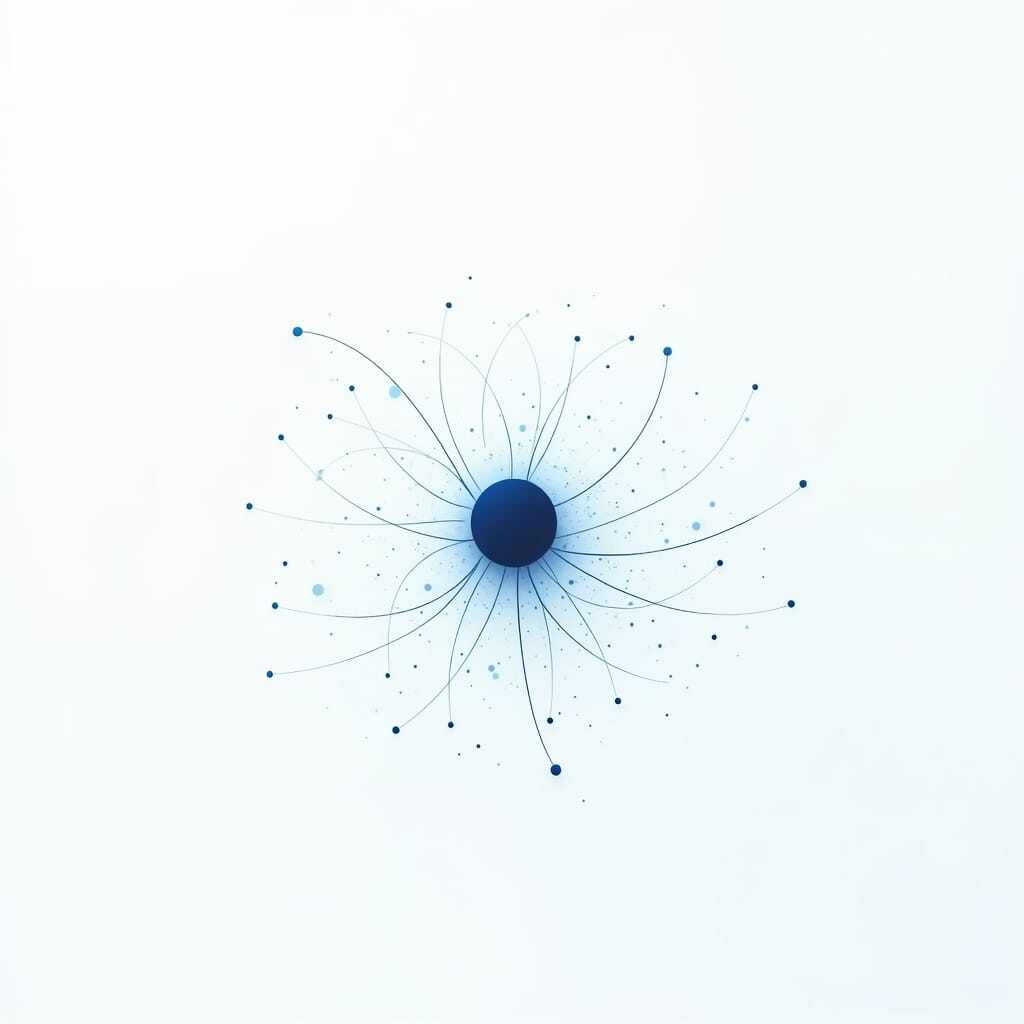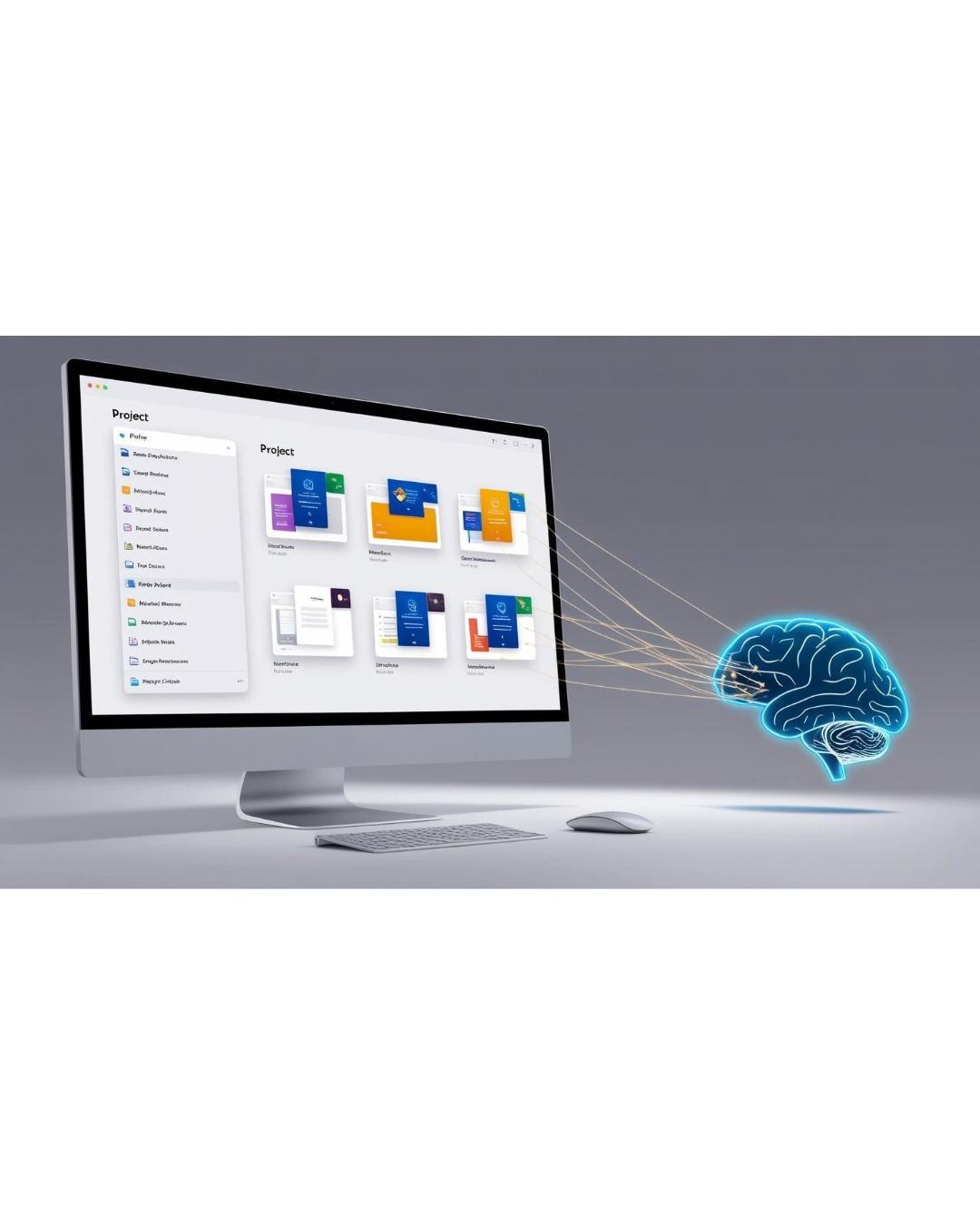Imagine trying to navigate a sprawling city like New York or London with only a collection of outdated, fragmented maps. Each map shows a tiny part of the city, but none of them connect. As you move from one neighborhood to the next, you’re left flipping between maps, mentally piecing together your route to avoid getting lost.
This process would be exhausting, and incredibly frustrating - but it’s exactly how most of us operate within today’s digital work environments! We rely on separate, disconnected tools and apps, forced to constantly copy/paste, switch contexts, and manually stitch together information to get anything done.
The sheer volume of “map-switching” creates a mental burden, leading to confusion, overwhelm, and burnout. Even new AI tools, despite their strengths, are like yet another map - adding to the noise instead of truly solving the problem.
What if, instead of these fragmented tools, we had a comprehensive, integrated navigation system? A digital GPS that didn’t just hold the scattered context of our work, but guided us seamlessly from start to finish, supporting us in focusing on what matters most.
The Limits of Today’s “Maps”
Most of today’s tools and apps are built in isolation, each with its own format and focus. While each serves a purpose, together they create a disjointed, outdated system that doesn’t reflect the reality of how we work or the kind of support we need. Every document, chat, and project management tool is like another neighborhood map, leaving us to connect the dots in our heads and juggle endless tabs, windows, file paths, and notifications.
And that’s why Reframe is creating a new infrastructure - a digital workspace designed to bring everything together. An app-agnostic and OS-agnostic system that acts as a wrap around to your current work environment. Rather than adding to the map overload, Reframe’s Organized Work Environment (OWE) transforms the entire digital landscape into one integrated system.
A System Built for the Future of Work
Imagine if, instead of relying on these fragmented apps, we had a GPS that could unify and navigate that entire digital landscape, guiding us seamlessly from start to finish and holding all the necessary context for us.
This new infrastructure wouldn’t just map out tasks and tools - it would integrate them, organizing our scattered work across disparate apps into cohesive Streams that pull together every relevant element of our work context. These Streams ensure that we’re not constantly piecing information together, but have a unified view across apps, documents, and data sources - all in one place.
But integration is just one part of what makes a system like the OWE transformative. The Organized Work Environment would also help us stay on task with built-in focus guides that bring awareness to any distractions or unexpected additions to the work at hand. Instead of getting sidetracked, refilling our work environments with endless tabs and windows, the OWE helps us recognize when we’re moving off course, gently realigning us toward the priorities and next steps that matter most. These focus guides act like supportive guardrails, facilitating our concentration and allowing us to zero in on what’s essential - whether it’s resolving a critical JIRA ticket or finalizing a strategy update in Word.
This isn’t just about connecting the dots - it’s about enabling genuine progress and advancing human capacity. With real-time insights, updates on potential roadblocks and a structure that ensures alignment across the team, the OWE coordinates the entire digital workspace in a seamless integrated system. And that’s exactly what Reframe is building.
So, how would the OWE work for you and me?
Well, imagine a product manager is overseeing a high-stakes product launch. They’re juggling Trello for task management, JIRA for tracking developer progress, Slack for real-time conversations, email for stakeholder updates, and Word for documentation. Each tool is like a different neighborhood map. To stay on top of the project, the manager has to switch between these apps constantly, manually piecing together information.
They might have to check Trello to update task assignments, move to JIRA, to see if developers have resolved certain issues, jump into Slack to clarify a question someone asked, and then open Word to revise project specs based on new information. This constant app-switching leaves the manager mentally stitching together the broader picture of the project. They may even manually attempt to connect the dots by hyperlinking between apps or copy/pasting information from one app to another. Even worse, every new status update or task revision means more time spent syncing information across tools, leading to inevitable delays, miscommunications, and stress.
Now, imagine if instead of relying on these fragmented tools, the product manager had an Organized Work Environment (OWE) that functioned like a GPS for their entire project landscape. This OWE would integrate the proper Trello, JIRA, Slack, email, and Word artifacts into a unified view - or what we at Reframe call, a “Stream.” This manager wouldn’t have to go digging for apps or manually search for updates because all the relevant information would appear in one cohesive Stream, where all the necessary context is organized and up to date.
The GPS-like OWE would also offer real-time insights - alerting the manager to a critical delay flagged in JIRA for example, or highlighting a Slack conversation where the team needs clarification on the specs in Word. It would enable the manager to focus on the most pressing issues, guiding their attention to key updates and notifying them of potential roadblocks, much like a GPS reroutes us around traffic.
And it doesn’t stop there! The OWE would also support “attention management” - if the manager starts working on a new task or adding details to an existing one, the OWE helps allocate and organize this new information appropriately. It alerts the manager to potential distractions and additions to the work at hand, guiding and facilitating their focus back to where they intended it to be.
Can you imagine working like this? We’d finally spend less time searching for information, going down unintended rabbit holes, and spend more time making strategic decisions and focusing on the work that matters. Instead of exhausting hours manually coordinating between tools, the computer’s digital environment does that for us, guiding us, supporting us, and staying on task, so that we could truly lead our projects, confident that we’re always looking at the full picture in real time.
Working Together, Across the “Map”
And in the real world, this product manager doesn’t operate in isolation. They’re part of a larger team - each person using their own version of apps and tools, like Trello, JIRA, Slack, and email. Just like the product manager had to mentally piece together the information from different tools, each team member now has to sync their information with everyone else. It’s like trying to navigate New York or London with a group of friends, where each person has only a partial map.
Without an integrated system, everyone is forced to constantly stop, share fragmented directions, and manually stitch together each other’s routes. This constant interruption and disjointedness leads not only to confusion and wasted time, but to deeper issues. It’s easy to lose track of who’s responsible for what, how tasks connect to larger goals, or even what those goals are. This lack of alignment causes miscommunication and frustration to pile up - and it’s exactly how collaboration often feels like in today’s workplace.
Even adding AI into the mix doesn’t solve the fundamental problem. AI may provide smarter, faster insights, get task-level work done faster, but without a shared, team-wide “GPS” that connects the whole context - all goals, strategies, accountabilities, tools, information - and keeps the whole team aligned, AI remains just another isolated piece of the puzzle.
Reframe’s Vision: A Smarter, Integrated Way to Work
We’ve all felt this frustration of navigating today’s fragmented digital landscape - jumping between apps, chasing down updates, getting sidetracked by rabbit holes that pull us away from our priorities, and manually piecing together information just to keep work on track. It’s exhausting and no “app” alone can fix it because our computers weren’t designed to integrate our apps seamlessly. At Reframe, we not only envision a workspace where all of that just works - we’re building it. An environment where you can move seamlessly between tasks, stay focused on priorities, and collaborate efficiently and effectively with your team.
We’re taking the first steps towards making this vision a reality. Our current product is an early version, a first glimpse at what an Organized Work Environment can do. It’s a foundational tool designed to integrate key elements of your work and give a taste of the clarity and alignment we envision. As we release this alpha version to a small group of users, we’re excited to grow and refine it with the insights of early testers like you.
If you’re ready to help shape the future of work, we invite you to join us as an early tester. Be among the first to experience this evolving platform, share your feedback, and be part of building something transformative from the ground up.
Sign up today, and let’s create the future of work, together.


%20(2).png)

